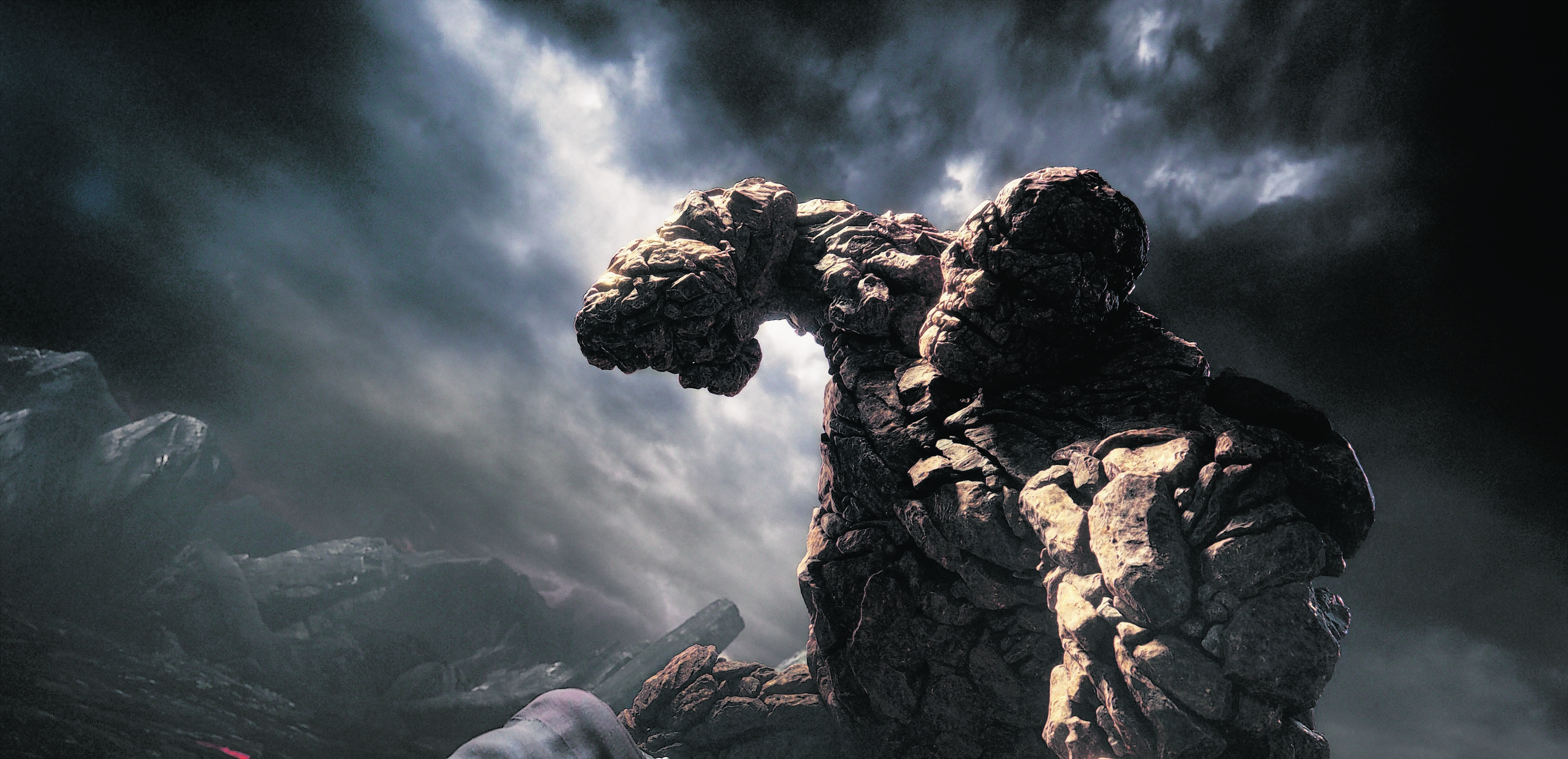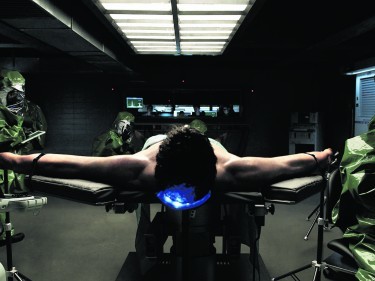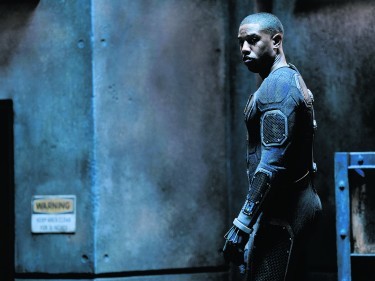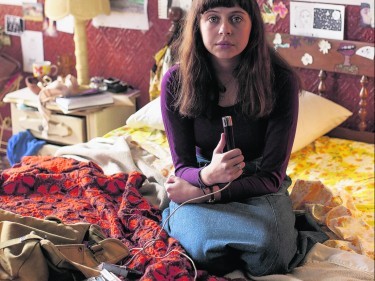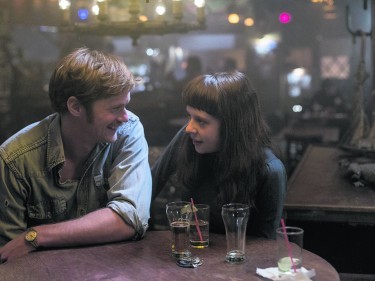FANTASTIC FOUR (12A)
2 stars
If at first you don’t succeed, please admit defeat gracefully.
That would be my heartfelt advice to filmmakers who have been striving for decades to bring Marvel Comics’ longest-running superhero team to life on the big screen.
A low-budget Fantastic Four shot in 1993 and produced by Roger Corman was never released and a vapid 2005 blockbuster starring Ioan Gruffudd, Jessica Alba, Chris Evans and Michael Chiklis spawned an equally dull sequel two years later.
Now, Josh Trank, who helmed the slick sci-fi fantasy Chronicle, attempts to reboot the franchise with a hip young cast, but similarly depressing results.
The opening chapters of most superhero film series have to illuminate only one origin story, but Fantastic Four has the unenviable task of putting flesh on the bones of a quartet of distinctly different protagonists and their mentally unhinged arch-nemesis. Regrettably, the three scriptwriters don’t possess the powers of brevity or wit, daubing characters in broad strokes in between high-volume, low-thrills action set-pieces.
The only thing remotely “fantastic” about Trank’s film is that he has limited our suffering to 100 minutes.
Be exceedingly grateful for small mercies.
Miles Teller, who was mesmerising in Whiplash, squanders his talent as Reed Richards, an inquisitive student from Oyster Bay, New York, who creates a “cymatic matter shuttle” with best friend Ben Grimm (Jamie Bell) that transports objects between two realms.
Dr Franklin Storm (Reg E. Cathey), dean of the Baxter Institute, offers Reed a scholarship to realise his dream of inter-dimensional travel as part of a privately funded team that includes Storm’s adopted daughter, Sue (Kate Mara), hot-headed son Johnny (Michael B. Jordan) and computer scientist Victor von Doom (Toby Kebbell).
Disaster strikes during the first teleportation and Victor is lost, presumed dead.
The survivors recuperate with “aggressively abnormal conditions” at a classified facility known as Area 57.
Reed can stretch his human form to outrageous lengths and Sue can become invisible and generate force fields.
Johnny can set himself ablaze and take flight while Ben is cocooned inside stone armour and can perform feats of incredible strength.
Baxter Institute board member Allen (Tim Blake Nelson) intends to sell the survivors to the highest military bidder, but US government subterfuge is a trifling distraction from the destruction wrought by Victor, when he returns to our world as megalomaniacal super-villain Dr Doom.
Fantastic Four delivers a soulless blitzkrieg of wanton destruction, hung limply on an undernourished screenplay.
The good-looking ensemble cast struggles to be seen and heard above the digitally generated din and Trank’s film is devoid of jeopardy, even when Dr Doom conjures a black hole to bring about mankind’s downfall. Part of us secretly hopes he succeeds.
Total annihilation is a small price to pay to rule out the possibility of a Fantastic Four sequel.
THE DIARY OF A TEENAGE GIRL (18)
4 stars
No one emerges from the sprawling emotional minefield of adolescence without a few bruises and scars.
In that time of hormone-fuelled experimentation and startling self-realisation, when sexuality is wonderfully fluid, it’s important to stumble and fall – sometimes spectacularly – before nervously crossing the Rubicon into adulthood.
Adapted from Phoebe Gloeckner’s 2002 graphic novel, The Diary of a Teenage Girl elegantly documents a 15-year-old’s sprint through this minefield without casting judgment on the morally flawed characters, or condemning them for their provocative actions.
First-time writer-director Marielle Heller takes her aesthetic lead from the era (bell-bottomed 1976 San Francisco) and the visually arresting source material.
She bleaches her colour palette to resemble a washed-out instamatic camera print and visualises the heroine’s daydreams as animated sequences – courtesy of artist Sara Gunnarsdóttir – that occasionally blossom within the live action.
These risky stylistic ambitions could have been Heller’s downfall, but there’s charm and purpose in the amalgamation of filmmaking styles.
The writer-director is aided by an excellent cast led by British rising star Bel Powley, who sports a flawless American accent and exposes herself – figuratively and literally – to the camera for close scrutiny.
It’s a far cry from her comical turn as a plummy Princess Margaret in A Royal Night Out.
“I had sex today,” gushes 15-year-old Minnie Goetze (Powley), recording the first chapter of an audio diary on to cassettes, which she hides in a shoe box under her bed.
As Minnie breathlessly details events leading up to the loss of her virginity, we realise with a shudder that her first sexual partner is her mother’s 35-year-old boyfriend, Monroe (Alexander Skarsgård).
“I was afraid to pass up the chance because I may never have another,” confesses Minnie without a hint of self-deception.
Monroe becomes enslaved to Minnie, who embraces her burgeoning sexuality in the company of a rich-kid fellow-student (Austin Lyon), a pretty lesbian (Margarita Levieva) and her best friend, Kimmie (Madeleine Waters).
When Minnie’s bohemian, drug-snorting mum (Kristen Wiig) discovers the illegal relationship, Heller navigates the fallout with considerable flair and sensitivity.
The Diary of a Teenage Girl is anchored by Powley’s luminous portrayal of a bud waiting to bloom in the warmth of the northern-California sun.
There’s a beautiful scene early in the film when she stands in front of a mirror and traces the contours of her naked body, while wondering: “What’s the point of living if nobody loves you, nobody sees you, nobody touches you?”
Her heroine’s sense of fateful curiosity infuses every artful frame, catalysing terrific scenes with Wiig and Skarsgård, who lends his divisive character an easygoing charm and fallibility.
Wry humour cuts through the potentially sensationalist subject matter, allowing us to view the storm through Minnie’s wide eyes before the tears well and fall.
